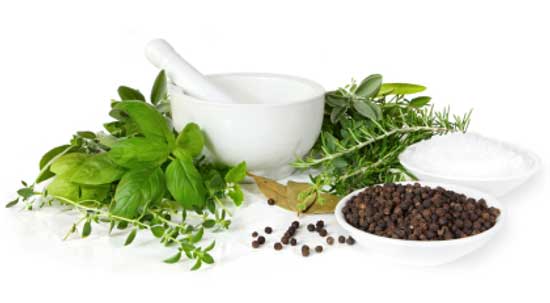
6 Most Potent Supplements & Herbals for Glucose Control
Alpha-Lipoic Acid (Lipoic Acid) & Peripheral Neuropathy
More than 20% of diabetic patients develop a type of nerve damage that may result in pain, loss of sensation, and weakness, particularly in the lower extremities. Peripheral neuropathy is also a leading cause of lower limb amputation in diabetic patients. The results of several large randomized controlled trials indicate that maintaining blood glucose at near normal levels is the most important step in decreasing the risk of diabetic neuropathy. However, such intensive blood glucose control may not be achievable in all diabetic patients.
Intravenous and oral lipoic acid are approved for the treatment of diabetic neuropathy in Germany. A meta-analysis that combined the results of four randomized controlled trials, including 1,258 diabetic patients, found that treatment with 600 mg/day of intravenous LA for three weeks significantly reduced the symptoms of diabetic neuropathy to a clinically meaningful degree (source link).
Chromium
Chromium is an essential element required for normal carbohydrate and lipid metabolism. Signs of chromium deficiency have been documented on numerous occasions, including elevated blood glucose, insulin, cholesterol and triglycerides, and decreased high density lipoproteins (HDL) in humans consuming normal diets. More severe signs of chromium deficiency (including nerve and brain disorders) that are reversed by supplemental Cr have been reported for patients on total parenteral nutrition.
Chromium has been shown to play a role in glucose intolerance, type 2 diabetes and gestational diabetes. The mechanism of action of chromium involves increased insulin binding, an increased insulin receptor number, and increased insulin receptor phosphorylation. In summary, supplemental
chromium has been shown to have beneficial effects without any documented side effects on people with varying degrees of glucose intolerance ranging from mild glucose intolerance to overt type 2 diabetes (souce link).
Cinnamon
The results of a 2003 looked at 60 men and women with Type 2 diabetes who were taking diabetes pills. The participants took either 1, 3, or 6 grams of cassia cinnamon or a placebo, in capsule form, for 40 days. After this time, blood glucose levels dropped between 18% and 29% in all three groups that received cinnamon. However, only the participants who had taken the smallest amount of cinnamon (1 gram) continued to have improved blood glucose levels 20 days after they stopped taking it, for reasons the researchers didnít quite understand. This study demonstrated that intake of 1, 3, or 6 g of cinnamon per day not only reduced serum glucose, but also lowered: triglyceride, LDL cholesterol, and total cholesterol levels. This study suggests that the inclusion of cinnamon in the diet of people with type 2 diabetes will reduce risk factors associated with diabetes and cardiovascular diseases.† (study link).
Fenugreek
The effect of fenugreek on glucose and insulin levels following the meal tolerance test (MTT) was studied in non-insulin dependent diabetics. The addition of powdered fenugreek seed (15 g) soaked in water significantly reduced glucose levels after meal consumption (source link).
Fiber
This study addresses the current theory, research, and implications of dietary fiber in the management of type 2 diabetes. Possible mechanisms for metabolic improvements with dietary fiber include: a delay of glucose absorption, an increase in the efficiency of insulin extraction, and increased insulin sensitivity at the cellular level. Patients with type 2 diabetes should increase their dietary fiber intake to 20 to 35 grams per day (source link).
Magnesium
Supplementing with magnesium has been shown to help reverse impaired† insulin responses (i.e., insulin sensitivity), †the major cause of type 2 diabetes. People who consumed the most magnesium in foods and from vitamin supplements were about half as likely to develop this disease over the next 20 years as those who didnít. Many adults do not meet the RDA for magnesium (320 mg per day for women and 420 mg per day for men). (source link)
References:
Linus Pauling Institute Micronutrient Research for Optimum Health Diabetic Neuropathy lpi.oregonstate.edu/infocenter/othernuts/la/#dmneurop
Richard A. Anderson, PhD, FACN Chromium, Glucose Intolerance and Diabetes Nutrients Requirements and Functions Laboratory, Beltsville Human Nutrition Research Center, US Department of Agriculture, ARS, Beltsville, Maryland bio-genesis.com/productpages/diabetone-bar/chromium%20and%20glucose%20intolerance.pdf
Khan A, Safdar M, Ali Khan MM, Khattak KN, Anderson RA Cinnamon Improves Glucose and Lipids of People with Type 2 Diabetes, Department of Human Nutrition, NWFP Agricultural University, Peshwar, Pakistan, Diabetes Care. 2003 Dec;26(12):3215-8. PubMed
Madar Z, Abel R, Samish S, Arad J, Glucose-Lowering Effect of Fenugreek in Non-Insulin Diabetics, Department of Biochemistry and Human Nutrition, Faculty of Agriculture, Rehovot, Israel. Eur J Clin Nutr. 1988 Jan;42(1):51-4 PubMed
Tabatabai A, Li S. Dietary Fiber and Type 2 Diabetes Rush Presbyterian-St. Lukeís Medical Center, Chicago, IL, USA. Clin Excell Nurse Pract. 2000 Sep;45):272-6 PubMed
Paolisso G, Scheen A, DíOnofrio F, Lefebvre P. Magnesium and Glucose Homeostasis Diabetologia 1990 Sep;33(9):511-4 PubMed |









